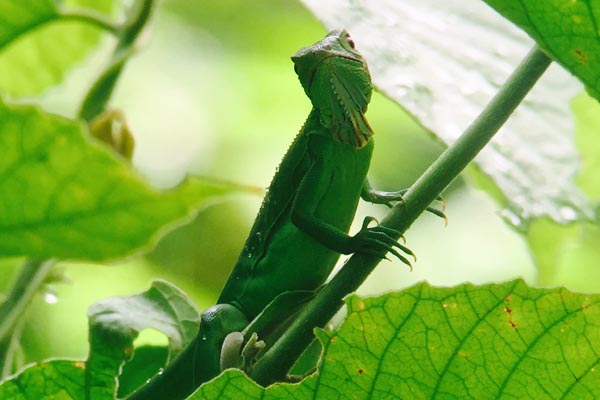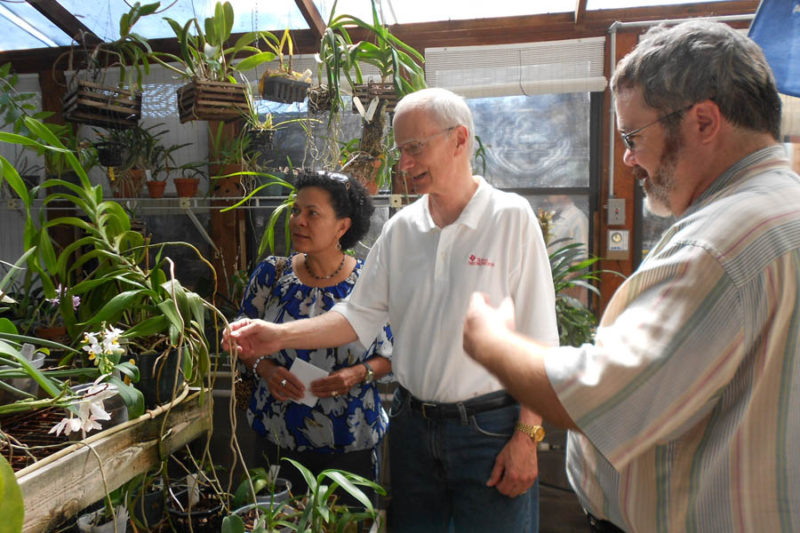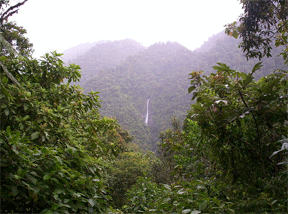
Why protect the rainforest?
How to best maintain a proper environment for our orchids? This is the question we are faced with at this time of the year, particularly if we have a greenhouse. The easy months have slipped by when things were just right– not too hot, not too cold. Now comes the hot weather, when we are reminded on a daily basis just how sensitive orchids are to the environment in which they live.

Members of Greater North Texas Orchid Society tour my greenhouse
In the same way as happens in our greenhouses or windowsills, orchids in the wild face challenges, also. We care about our orchids in our collections. They add beauty and pleasure to our lives. And with proper care, and a little luck, they will be there for us to enjoy for many years.
Why, then, should we concern ourselves about orchids in the wild? After all, most of won’t have the opportunity to visit the exotic places where they still exist. And any time we want to add to our collections, vendors are only too happy to oblige us with more species than we can fit in our budget!
The answer is really quite simple. This planet is all that we have. It offers all that we need for our existence, and the things of beauty are what make this existence pleasurable. We have been given this beauty in trust and we have an obligation to the future to protect it. Much of this beauty has not been discovered yet, and much has already been lost.
Most of this beauty we can never bring into our greenhouses. It must be seen and preserved in its natural state. The Alliance for Zero Extinction has under its purview about 1.4% of the earth’s surface that holds about 60% of the terrestrial biodiversity. That is pretty amazing, especially when we consider that we lose an area of forests equivalent to the size of Switzerland every year.
With such losses, it is amazing that so much diversity is still being protected. As recently as the 1970, it was projected that by the turn of the century, all of the world’s tropical forests would have been logged, and with them much of the biodiversity lost. I remember in the 1970’s that rainforests were being lost at the rate of 63 acres a minute. That shocking number has stayed with me. Today that rate is up to 100 acres a minute.
Quiz: What percentage of the Earth’s plant and animal species live in rainforests?
Despite these depressing losses, we are actually seeing a dramatic conservation efforts to preserve the remaining areas which have the greatest biodiversity. Another cause for optimism is the coalition of interests that are coming together to focus on preserving habitats as well as species. It is as likely that bird watchers will take part in eco-tours as would be any of an expanding number of societies with their own special interest, such as orchid clubs.
We orchid lovers are benefiting from the combined efforts brought about by the exploding growth of eco-tours, as well as the World Wildlife Fund, the Nature Conservancy, and many other organizations who send information to your mailbox, and to which many of you contribute.
Much of this success has come about through partnerships with local organizations already in place and with proven track records. The Orchid Conservation Alliance selects the most promising organizations to work in partnership with them, and to help with funding. GNTOS and other societies within SWROGA have helped OCA in their Serra Bonita preservation project in Brazil. Other orchid clubs have also become interested in this project, and have made valuable contributions. But it is not just orchid hobbyists contributing. The Rainforest Trust funded this effort as well with an appeal mostly aimed at bird and animal preservationists. And with powerful organization like Rainforest Trust, our contributions go further with matching funds obtained through their broad reach to so many preservation interest groups.
I am very optimistic that our efforts to fund the OCA and the Rainforest Trust are making a difference, and that our generation is the one to fulfill our obligation to honor the trust we have with the future generations.
Answer to the quiz: 50% of species of plant and animals live in rainforests. Isn’t it easy to see why doing all we can to halt deforestation is vital?
